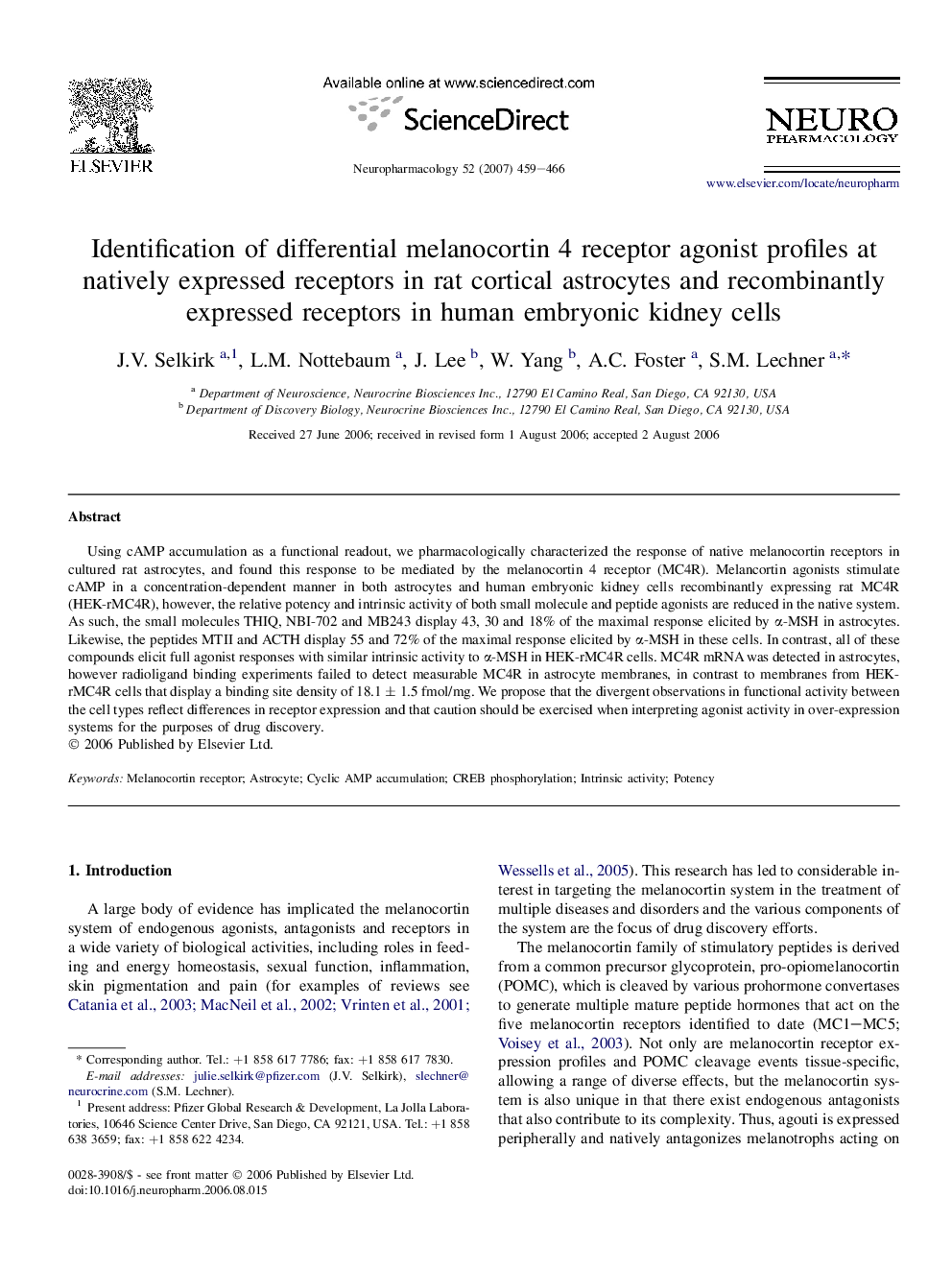| Article ID | Journal | Published Year | Pages | File Type |
|---|---|---|---|---|
| 2494813 | Neuropharmacology | 2007 | 8 Pages |
Using cAMP accumulation as a functional readout, we pharmacologically characterized the response of native melanocortin receptors in cultured rat astrocytes, and found this response to be mediated by the melanocortin 4 receptor (MC4R). Melancortin agonists stimulate cAMP in a concentration-dependent manner in both astrocytes and human embryonic kidney cells recombinantly expressing rat MC4R (HEK-rMC4R), however, the relative potency and intrinsic activity of both small molecule and peptide agonists are reduced in the native system. As such, the small molecules THIQ, NBI-702 and MB243 display 43, 30 and 18% of the maximal response elicited by α-MSH in astrocytes. Likewise, the peptides MTII and ACTH display 55 and 72% of the maximal response elicited by α-MSH in these cells. In contrast, all of these compounds elicit full agonist responses with similar intrinsic activity to α-MSH in HEK-rMC4R cells. MC4R mRNA was detected in astrocytes, however radioligand binding experiments failed to detect measurable MC4R in astrocyte membranes, in contrast to membranes from HEK-rMC4R cells that display a binding site density of 18.1 ± 1.5 fmol/mg. We propose that the divergent observations in functional activity between the cell types reflect differences in receptor expression and that caution should be exercised when interpreting agonist activity in over-expression systems for the purposes of drug discovery.
